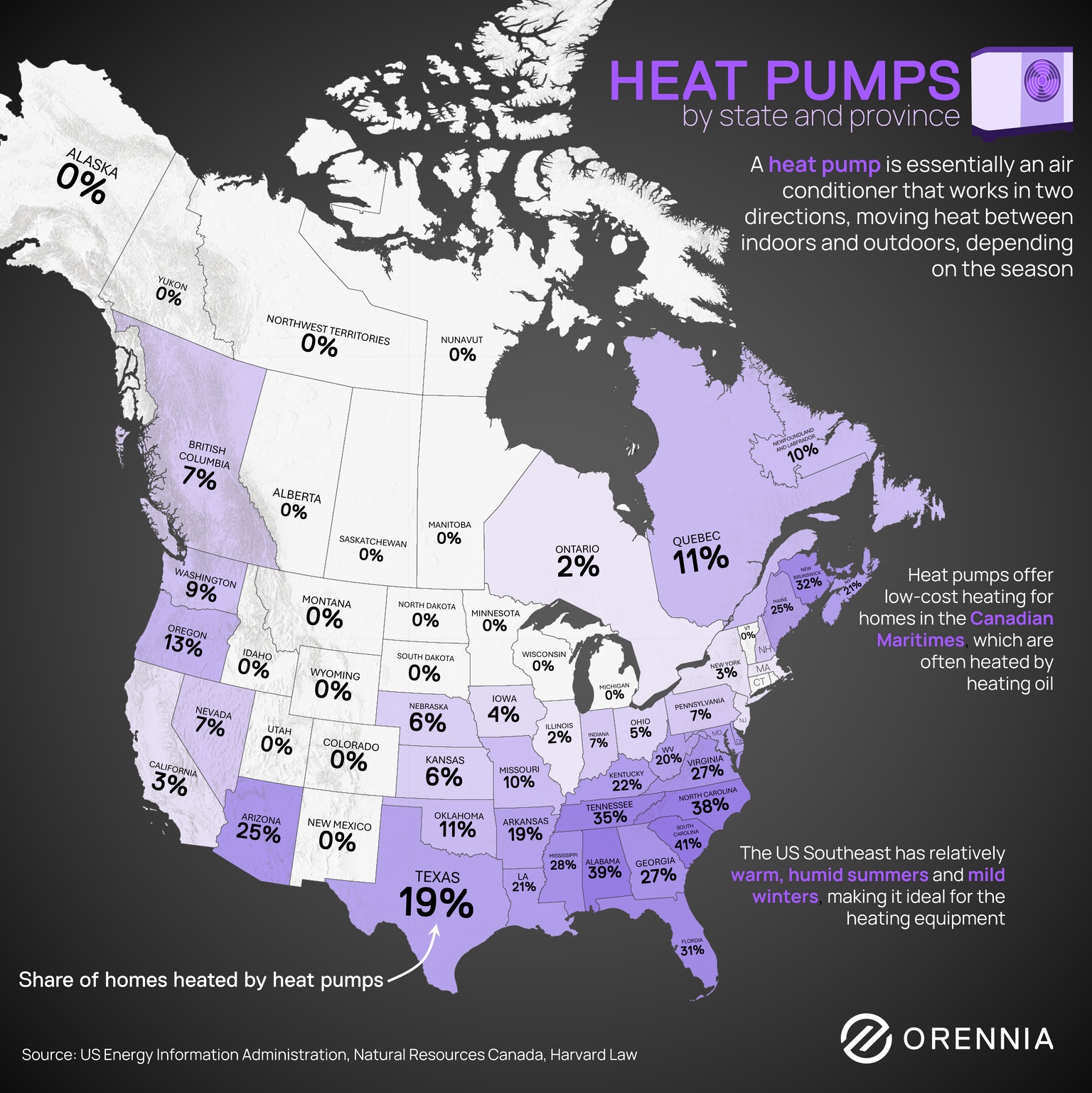
Aaron Foyer
Vice President, Research and Analytics

Aaron Foyer
Vice President, Research and Analytics

A heat pump is essentially an air conditioner that works in reverse when it’s cold: moving heat indoors in winter and outdoors in summer. Instead of burning fuel, it transfers heat, making it one of the most efficient ways to heat and cool a home.
Today, heat pumps dominate in the US Southeast, where warm, humid summers and mild winters make them ideal. They’re also taking off in Canada’s Maritime provinces, where they provide a low-cost alternative to heating oil.
Looking ahead, cold-climate heat pumps could push adoption farther north. Newer models are capable of operating efficiently at sub-zero temperatures, cutting energy costs and emissions even in regions that once relied exclusively on gas or oil furnaces.
Still, in the coldest parts of the continent, natural gas and hybrid systems will likely remain essential for backup heat on the chilliest days, reminding us that even the cleanest technologies have geographic limits.
Data-driven insights delivered to your inbox.